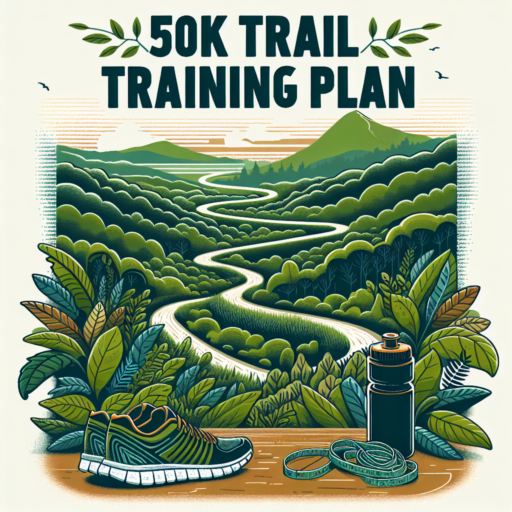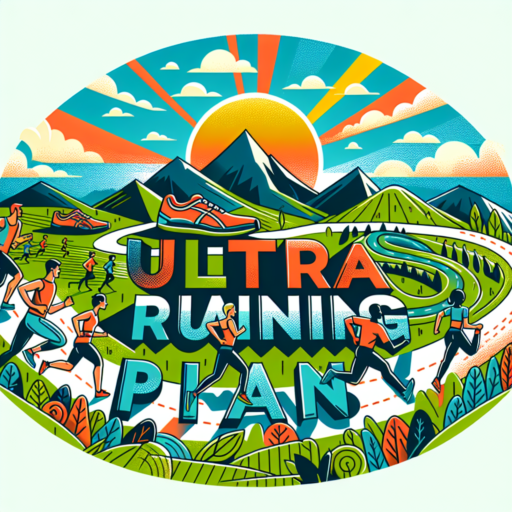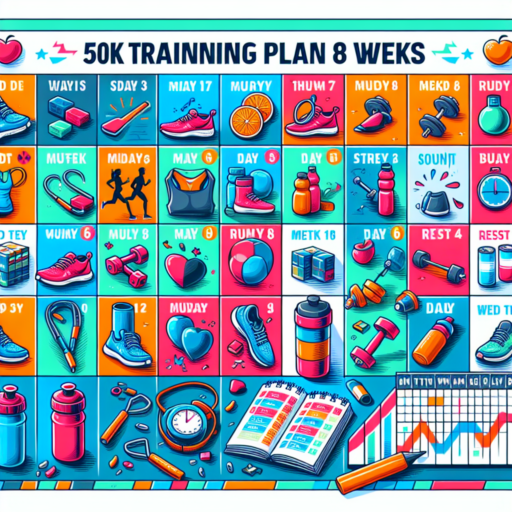Introduction to the 50k Trail Training Plan: Beginning Your Journey
Embarking on the journey to complete a 50k trail run is a thrilling adventure that marries physical endurance with the untamed beauty of nature. Whether you’re a seasoned runner looking to challenge yourself further or a newcomer eager to dive into the world of long-distance trail running, the right training plan is your blueprint to success. In this introduction, we’ll discuss the foundational steps to kickstart your 50k trail training plan, ensuring you begin your journey equipped with the necessary tools and mindset.
Understanding the Commitment
Training for a 50k trail run is a commitment that demands both physical and mental dedication. It’s about more than just logging miles; it’s about building strength, agility, and endurance to conquer varied terrains and weather conditions. Starting this journey means being prepared to allocate time for consistent and structured training sessions, focused on progressively increasing your distance and improving your trail running techniques.
Setting Realistic Goals
As you embark on this journey, it’s vital to set realistic goals. This isn’t just about reaching the 50k finish line; it’s about enjoying the journey and recognizing your progress. Establishing clear, achievable milestones along the way can help maintain motivation and provide a sense of accomplishment as you inch closer to your ultimate target. Tailoring your training plan to fit your current level of fitness and experience is essential for a smooth and enjoyable training process.
Beginning your 50k trail training plan is an exciting step towards achieving your running goals. By understanding the commitment involved, setting realistic goals, and approaching your training with a strategic mindset, you’re laying a solid foundation for success. As you move forward, remember that this journey is as much about embracing the beauty of the trails and the personal growth you’ll experience as it is about the physical challenge. Welcome to the start of your 50k trail running adventure.
Essentials of a 50k Trail Training Schedule
Embarking on a 50K trail run requires a significant amount of preparation, discipline, and an effective training schedule that highlights key components for success. The essence of a 50K trail training schedule lies in its ability to blend endurance, strength, and mental fortitude, preparing the runner for the unique challenges that trail running presents. Understanding these essentials can be the difference between crossing the finish line with a sense of accomplishment or falling short of your goals.
Building Endurance for Long Distances
At the core of any ultra-marathon training, especially a 50K, is building endurance. This doesn’t just mean running longer distances but doing so in a way that is progressive, adaptable, and sustainable. Incorporating long runs into your weekly routine is crucial, as these runs help your body adapt to the strain of prolonged physical exertion. However, it’s equally important to allow for adequate recovery time to prevent injuries and ensure continuous improvement. Balancing these long runs with shorter, recovery-focused sessions will keep your training on track without leading to burnout.
Strength and Conditioning
Beyond just clocking miles, a 50K trail runner must emphasize strength and conditioning exercises specific to trail running. Trail running often involves uneven terrains and steep inclines that demand more from your body than flat, road running. Incorporating exercises that strengthen your core, legs, and ankles can significantly enhance your stability, power, and endurance on the trail. Exercises such as squats, lunges, and plyometrics are particularly beneficial for building the muscular endurance required for successful trail running.
Mental Preparation
Trail running, especially distances as challenging as 50K, requires not just physical but also significant mental preparation. The solitude of long-distance running, coupled with the physical demands of trail running, can be as much a mental challenge as a physical one. Techniques such as visualization, goal setting, and mental resilience training can be invaluable tools in a runner’s arsenal. Preparing mentally involves not just facing the challenges of the trail ahead but embracing them, using them as fuel to push beyond perceived limitations.
Weekly Mileage Breakdown for a Successful 50k Trail Run
Preparing for a 50k trail run requires a precise and disciplined approach to training, especially when it comes to weekly mileage. A well-structured plan not only prepares your body for the physical demands of the race but also helps prevent overtraining and injuries. The key is to incrementally increase your distance, ensuring each week builds your endurance while allowing for recovery.
Starting your training, a good rule of thumb is to have a base mileage. This means you should already be comfortable running a certain distance weekly before ramping up to the specifics of the 50k preparation. Initially, focus on gradually increasing your weekly mileage by no more than 10%. This gradual increase helps acclimate your body to the increased demands of trail running without overwhelming it.
Incorporating variety in your training is crucial. This includes mixing long, slow runs with shorter, faster sessions, and not forgetting rest or cross-training days. For instance, you could structure your week as follows:
- Monday: Rest or gentle cross-training
- Tuesday: Short, high-intensity run
- Wednesday: Moderate-length tempo run
- Thursday: Rest or light cross-training
- Friday: Short, easy run
- Saturday: Long, slow distance run
- Sunday: Recovery run or rest
This approach ensures that your body gets the stimuli it needs to improve endurance and speed, while also providing sufficient recovery time, which is just as important as the runs themselves for achieving a successful 50k trail run outcome.
No se han encontrado productos.
Incorporating Hill Workouts and Elevation Gains in Your 50k Training
Preparing for a 50k race involves more than just racking up mileage on flat terrain. The inclusion of hill workouts and elevation gains in your training regime is pivotal for enhancing endurance, strength, and overall performance. Hills challenge your muscles and cardiovascular system in unique ways that flat surface training cannot replicate. This adjustment in your routine not only prepares your body for the inclines you’ll face during the race but also improves your running economy on varied terrains.
Benefits of Hill Workouts
Hill workouts are not just about preparing for the ups and downs of a race course. They also bring a host of other benefits. Training on inclines significantly improves leg strength, boosts cardiovascular health, and increases running efficiency. Moreover, hill sprints are a fantastic way to enhance explosive power and speed, making you a more versatile runner. By incorporating these sessions into your 50k training, you’re not just training to complete the race; you’re conditioning your body to perform at its best.
Strategies for Elevation Gain
Integrating elevation gains requires more than simply finding the nearest hill and running repeats. It’s about strategic incorporation that complements your overall training plan. Start with moderate inclines and progressively increase the gradient and length of your hill workouts. Including varied terrain in your long runs also simulates the unpredictable nature of race day conditions, enhancing your adaptability as a runner. Additionally, consider using stairs or treadmill settings to simulate hills if natural options are limited, ensuring consistent elevation training regardless of your location.
Remember, the goal of incorporating hill workouts and elevation gains into your 50k training is not to overwhelm your body but to gradually adapt it to the demands of the race. This approach ensures a holistic development of strength, endurance, and mental resilience, equipping you with the necessary tools to tackle the challenges of a 50k race head-on.
Cross-Training and Recovery Strategies for 50k Trail Runners
For 50k trail runners, embracing a holistic approach to training and recovery is crucial. Cross-training activities can significantly enhance endurance, strength, and resilience, reducing the risk of injury and improving overall performance. Similarly, adopting effective recovery strategies ensures that your body can heal and rejuvenate, keeping you on your running path without unwanted setbacks.
Integrating cross-training into your routine can vary from low-impact exercises such as swimming and cycling to strength training and Pilates. These activities not only help in building muscular strength and endurance but also in improving aerobic capacity. Moreover, they can increase flexibility and balance, which are essential for navigating the unpredictable terrains of a 50k trail run. Engaging in different types of workouts can also prevent the monotony that sometimes comes with running, keeping your training regimen fascinating and engaging.
On the flip side, recovery strategies are equally important. Post-run routines should include proper hydration, nutrition, and rest. Incorporating activities such as yoga and foam rolling can aid in muscle recovery and flexibility. Quality sleep cannot be overstated, as it is during this rest period that the body undergoes significant repair and recovery processes. Furthermore, allowing yourself rest days or engaging in active recovery activities can ensure that your body has time to recuperate fully, bridging the gap between hard training sessions and optimal performance.
Nutritional Guidelines to Fuel Your 50k Trail Training
When it comes to preparing for a 50k trail run, understanding the nutritional guidelines that will best support your training is paramount. Fueling your body correctly not only boosts your performance but also enhances recovery, ensuring you’re ready for the next day’s run. With the right balance of macronutrients, hydration, and timing, your nutrition plan can significantly impact your trail training outcomes.
Carbohydrates play a pivotal role in fueling long-distance runners. As your primary source of energy, focusing on complex carbohydrates such as whole grains, fruits, and vegetables is essential. These foods provide a sustained energy release, keeping you powered throughout your runs. Incorporating a moderate intake of proteins to support muscle repair and fats for long-lasting energy is also crucial. Tailoring these macronutrients to your training intensity and volume can optimize your performance and recovery.
Hydration is another key aspect often overlooked. The longer and more intense your trail runs, the more crucial it becomes to maintain proper hydration levels. Electrolyte balance is vital, especially during longer training sessions or in warmer climates. Incorporating electrolyte-rich drinks or foods can prevent cramps and other hydration-related issues, keeping you on track with your 50k training goals.
Understanding and Preparing for the Unique Terrain of a 50k Trail Race
Participating in a 50k trail race involves more than just physical endurance; it requires thorough preparation for the unique and challenging terrain you’ll encounter. The key to success involves not only understanding the type of terrain you’ll be facing but also tailoring your training to conquer it confidently.
Identify the Terrain Type
Firstly, it’s crucial to identify the specific type of terrain of your chosen 50k trail race. Trail races can vary dramatically, from rocky and steep mountain paths to muddy forest trails and everything in between. Each terrain type demands a different approach in preparation, both mentally and physically. Familiarizing yourself with the terrain through research or, if possible, first-hand experience can give you a significant advantage. This means not only studying maps and race descriptions but also talking to past participants about their experiences.
Adapt Your Training to the Terrain
Once you have a clear understanding of the terrain, the next step is to adapt your training to match it as closely as possible. If your race is on rocky trails with a lot of elevation changes, focus on hill training and technical trail running. Incorporate strength training into your routine to bolster your legs, ankles, and core, which are crucial for stability and power on unpredictable surfaces. Conversely, if the race includes a lot of soft, muddy paths, train in similar conditions to improve your balance and adapt your pacing strategy. This might include practicing on similar trails and choosing the right footwear to give you the best grip and support for the specific conditions you’ll face.
Understanding and preparing for the unique terrain of a 50k trail race is essential for success. The process involves a deep dive into the specifics of the race’s landscape, followed by tailored training that mimics the conditions as closely as possible. By focusing on these aspects, runners can greatly improve their performance, enjoying not only a competitive edge but also a richer, more engaging racing experience.
Key Workouts and Tempo Runs for Peak 50k Trail Performance
When aiming for peak performance in a 50k trail race, incorporating specific key workouts and tempo runs into your training regime is essential. These workouts are designed to enhance your endurance, speed, and strength on challenging trail terrains, ultimately preparing you physically and mentally for the race day.
The first crucial component of your training should be long, slow distance runs (LSD). These runs are the backbone of any ultramarathon training plan, as they significantly improve your aerobic capacity, teach your body to efficiently use fat as a fuel source, and boost your endurance. Aim to gradually increase the length of your LSD runs, ensuring your body adapts to longer distances without risking injury.
Integrating tempo runs is another vital strategy. Tempo runs, or sustained effort training, involve running at a challenging but manageable pace for a set period or distance. This type of workout improves your lactate threshold, allowing you to maintain a faster pace for longer periods. For 50k trail races, mix traditional flat-road tempo runs with trail-specific sessions that include variances in elevation to mimic race conditions.
Including hill repeats and strength workouts will target the muscle groups most used during trail running, improving your uphill efficiency and downhill speed. Hill repeats simulate the steep ascents and descents characteristic of many trail races, enhancing your power, agility, and resistance to fatigue. Strength workouts, particularly those focusing on the core, glutes, and legs, complement your running training by building the necessary muscle endurance to maintain form and prevent injuries.
Tapering and Final Preparations Before Your 50k Trail Race
As the 50k trail race draws near, the concept of tapering emerges as a crucial strategy in your training regimen. Tapering, the systematic reduction of training intensity and volume, plays a pivotal role in ensuring your body is rested and at peak performance on race day. This strategic phase allows your muscles to recover from the accumulated fatigue of intense training, while maintaining the fitness level you’ve worked hard to achieve.
During the final weeks leading up to your race, tapering should include a mix of continued, but less strenuous, running sessions, ample rest, and attention to nutrition. It’s not just about reducing the quantity of your training, but also enhancing the quality of your overall preparation. This period is also the ideal time to fine-tune your race strategy, from setting realistic pace goals to deciding on your nutrition plan during the race. Proper hydration and a balanced diet rich in carbohydrates and proteins become even more essential as you prepare your body for the demanding task ahead.
Aside from physical preparedness, mental readiness is also part of your final preparations. Visualizing the race course, setting personal objectives, and mentally rehearsing your strategy can significantly boost your confidence and focus. Developing a clear game plan for race day, including how you’ll manage pacing, nutrition, and hydration, as well as preparing for the unpredictability of trail running, such as weather changes and terrain variations, will leave you well-equipped to tackle the challenges of a 50k trail race.
Common Pitfalls to Avoid in Your 50k Trail Training Plan
Embarking on a 50k trail run represents a significant challenge, requiring a detailed and committed training plan. However, even the most enthusiastic runners can fall prey to common training pitfalls that could derail their progress and affect their performance on the big day. Recognizing and avoiding these mistakes is crucial for a successful and enjoyable trail running experience.
Overlooking Nutrition and Hydration
One of the most critical aspects of training for a 50k trail run is maintaining proper nutrition and hydration. Neglecting these can lead to decreased performance, increased fatigue, and even health risks during both training and the actual event. It’s essential to personalize your nutrition and hydration strategy to match your body’s needs, as well as the specifics of the trail and expected conditions on event day.
Ignoring Rest and Recovery
Another significant pitfall in 50k trail training is overlooking the importance of rest and recovery. While it might seem counterintuitive, rest days are just as important as training days. They allow your body to repair and strengthen itself. Skipping rest days increases the risk of injury and can lead to burnout, which might hinder your training progress and affect your performance and enjoyment of the run.
Improper Gear and Footwear
Training for and participating in a 50k trail run also requires the right gear and footwear, tailored to the trail’s specific conditions. Using improper or worn-out footwear can lead to discomfort, injuries, and even long-term damage to your feet and joints. Similarly, not choosing the appropriate gear, especially for weather conditions, can affect your training and race day performance. Ensuring you have the correct equipment that’s well-fitted and designed for trail running is crucial for your comfort, safety, and success.




